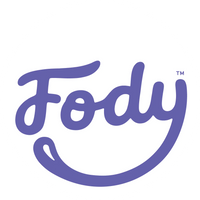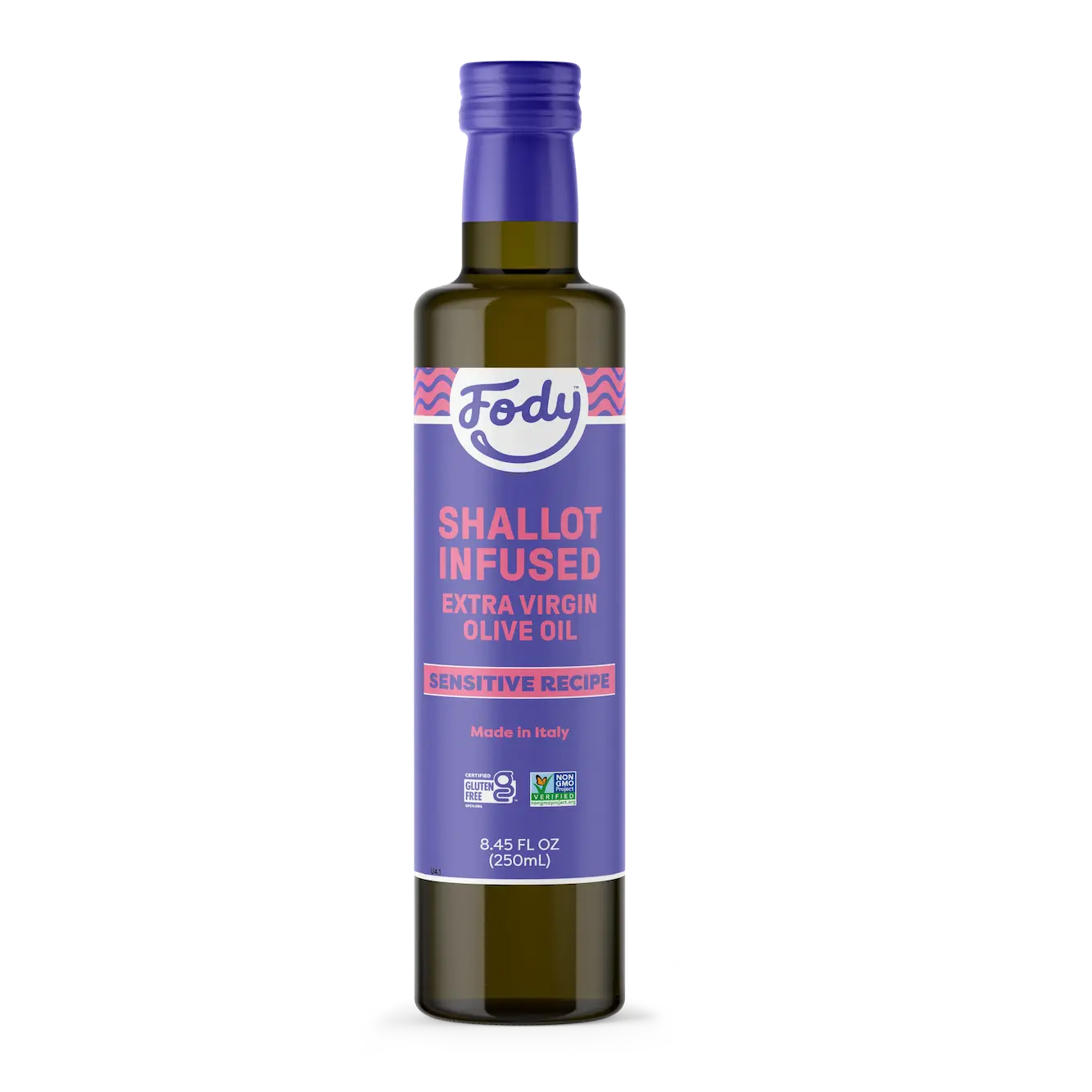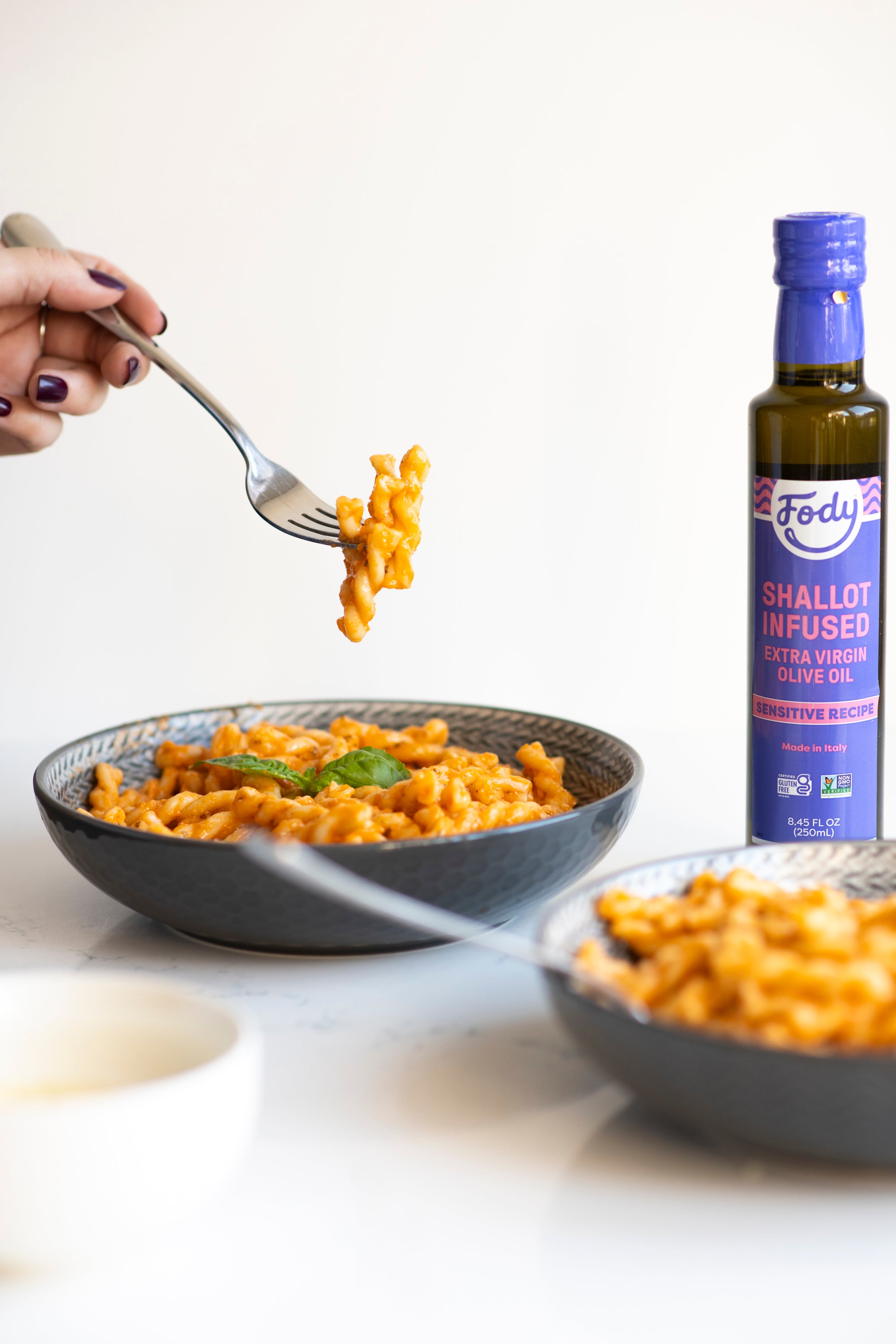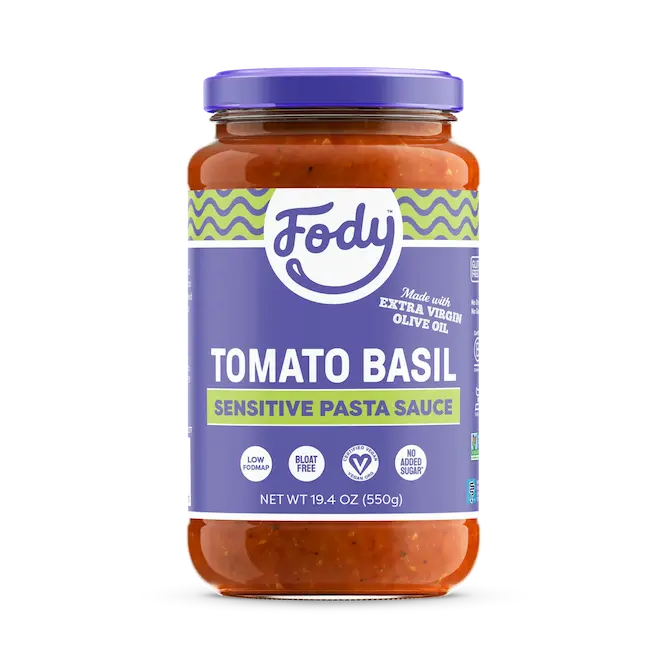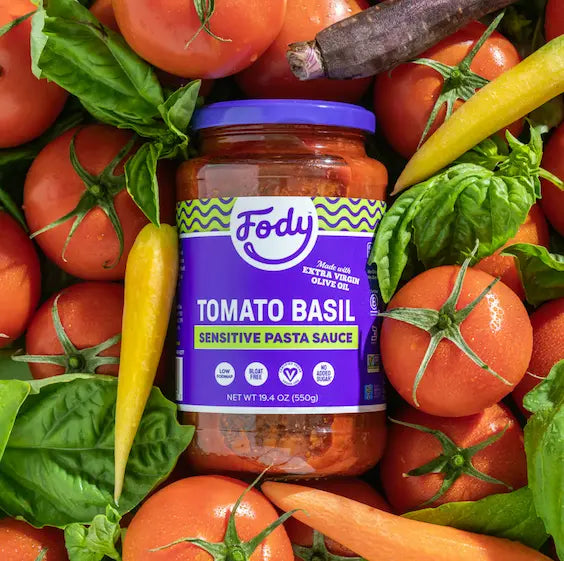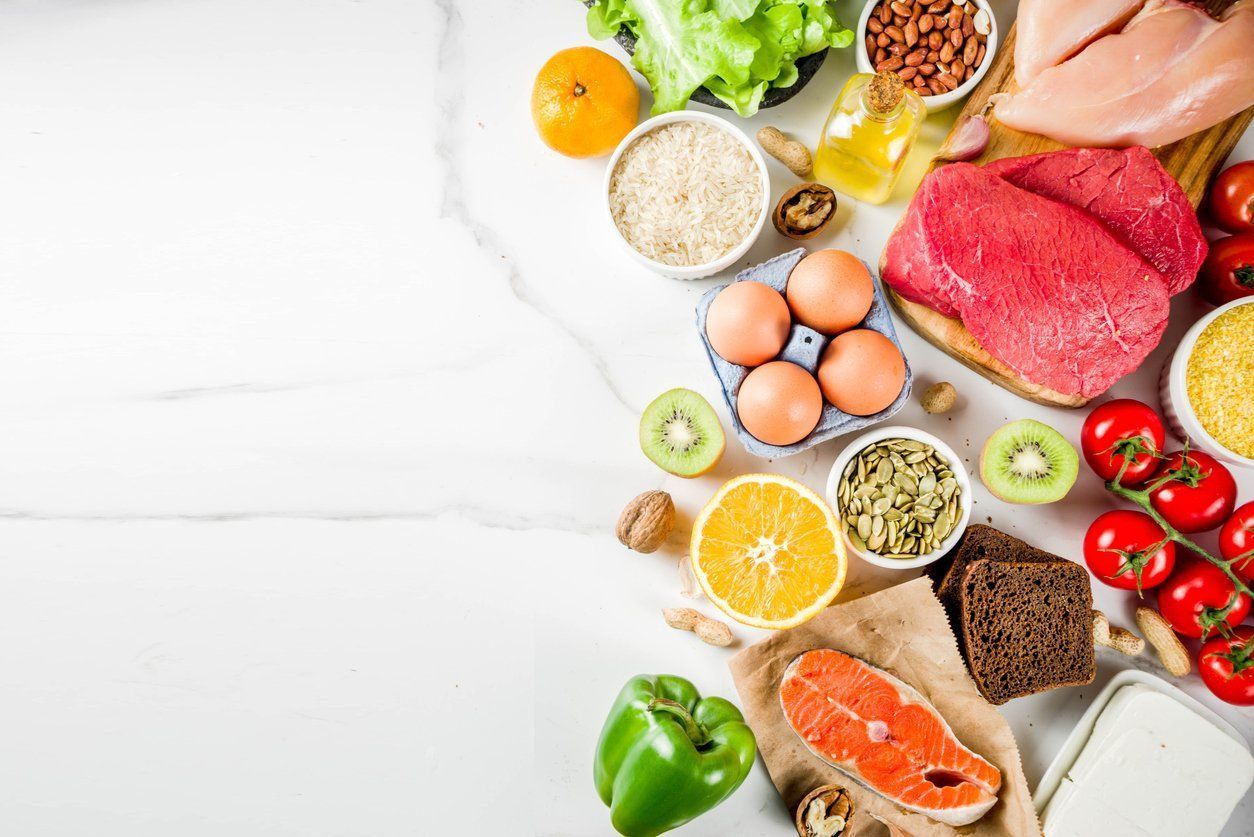

Answered: Google’s Top Questions about FODMAPS
In our last blog, we answered the most commonly asked questions about irritable bowel syndrome (IBS), according to search engine moguls Google.
This week, we’re tackling the most typed queries related to FODMAPs and the low FODMAP diet that’s inputted into that Google search bar every day. From a low FODMAP diet breakdown to where you can find the best low FODMAP diets and products, we’ve got you and your sensitive stomach covered.
What are FODMAPS?
FODMAPs are a group of short-chain carbohydrates found in everyday foods such as bread, onions, apples, and more.
Resistant to digestion, FODMAPs, instead of being properly absorbed into your bloodstream, travel through the gastrointestinal tract, drawing excess fluid into the small intestine and generating gas when they are fermented by bacteria in the large intestine.
The fluid and gas build-up caused by undigested FODMAPs pushes on the walls of the intestines, causing discomfort and altered bowel habits in susceptible individuals, predominantly IBS sufferers.
The word “FODMAP” is an acronym for the types of short-chain carbs that fall into this category.
Fermentable
Oligosaccharides: wheat, rye, onions, garlic, beans, split peas, dates, raisins
Disaccharides: milk, cottage cheese, yogurt, ice cream
Monosaccharides: mango, honey, asparagus, sugar snap peas
And
Polyols: peaches, blackberries, prunes, cauliflower, celery
What is the Low FODMAP Diet?
Pioneered by Monash University in Australia, the low FODMAP diet is the go-to dietary intervention for those suffering from IBS, as it can provide complete symptom relief for up to 75% of people with IBS.
Important to note, following a low FODMAP diet isn’t a lifetime change. The goal is to monitor your tolerance to each group of high FODMAP foods in order to accurately discover your trigger foods so you can avoid them.
The low FODMAP diet has three steps:
- Elimination: Completely avoid all high FODMAP foods for 2-6 weeks until symptoms are eliminated or significantly reduced.
- Reintroduction: Over 8-12 weeks, reintroduce high FODMAPS to your diet one group and one food at a time. One-by-one reintroduction is key because it will be otherwise impossible to determine which group(s) and food(s) are triggering your symptoms.
- Personalization: Once you have determined which FODMAP group(s) are a problem for you, it’s time to integrate what you’ve learned into your everyday life, striking a balance between enjoying your tolerated high FODMAP foods while avoiding the others.
How Do I Start a Low FODMAP Diet?
Once you’ve received an IBS diagnosis from your doctor, the best thing to do is to see a registered dietitian who specializes in IBS and similar disorders. They will help you through each step of the three-step low FODMAP diet, and help you create a personal diet plan based on your intolerances and IBS trigger foods.
Who Can Benefit from a Low FODMAP Diet?
While most known as a treatment for people with IBS, studies show that a low FODMAP diet can also be beneficial for people with other functional gastrointestinal disorders (FGID), as well as for people with inflammatory bowel diseases (IBD) like Crohn’s disease and ulcerative colitis.
Where Can I Find Low FODMAP Foods and Recipes?
You don’t need to travel far to purchase low FODMAP foods, such as sauces, condiments, snacks, and spices; we at Fody Foods offer a range of low FODMAP products to make low FODMAP living easier. All of our products are certified Low FODMAP.
For a collection of great and creative low FODMAP recipes for all occasions, you can check out the Fody recipes page, where we provide instructions on how to make low FODMAP dishes from amazing appetizers like Low FODMAP Bruschetta, to main dishes like Sesame Ginger Low FODMAP Chicken Skewers, to decadent desserts like Fody Chocolate Almond Brownies.
For more information about FODMAPs and how a low FODMAP diet can potentially help you, check out our Low FODMAP Diet Blog.
So, what are you waiting for?
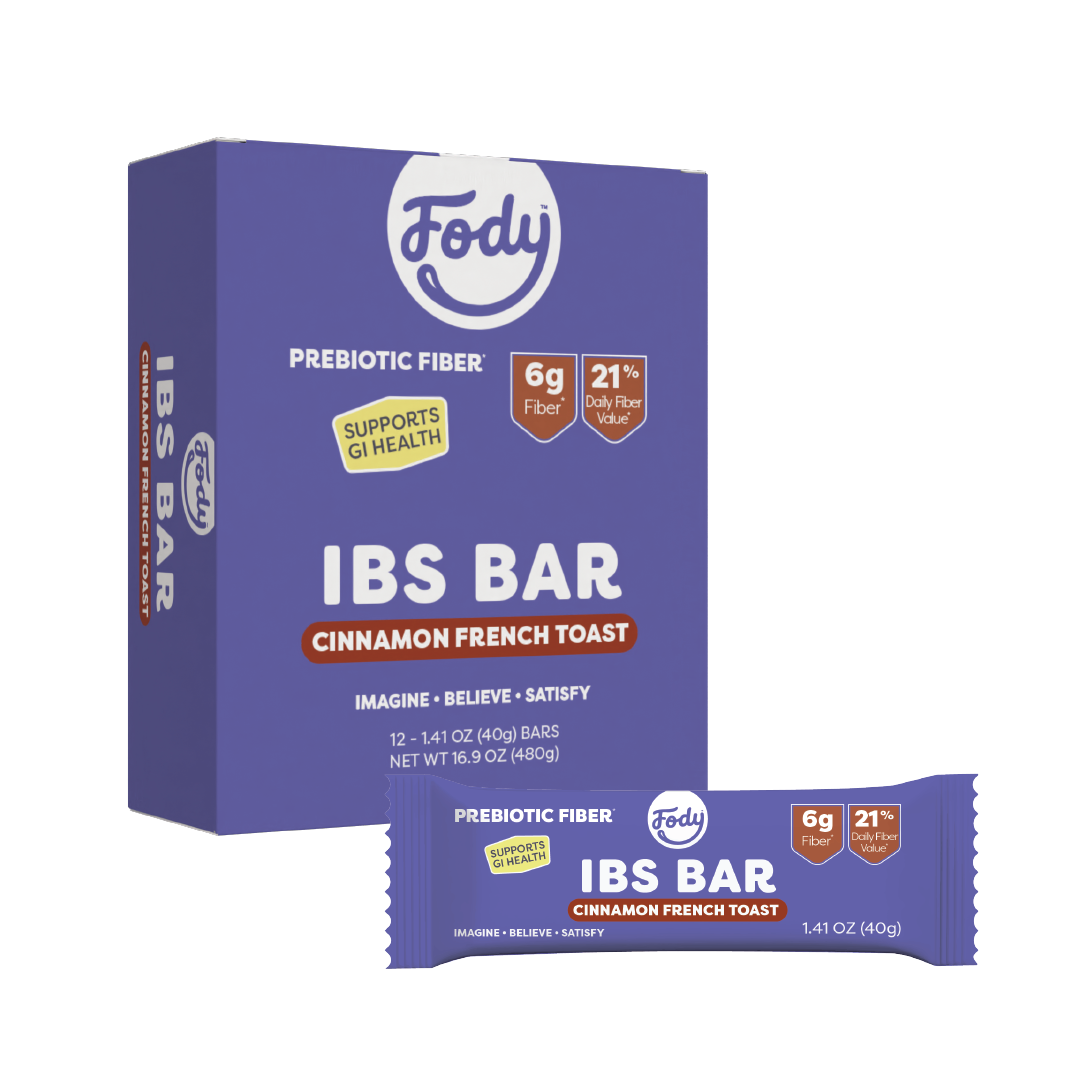
 Cinnamon French Toast High Fiber Snack Bar - 12 Pack
Cinnamon French Toast High Fiber Snack Bar - 12 PackCinnamon French Toast High Fiber Snack Bar - 12 Pack
$32.99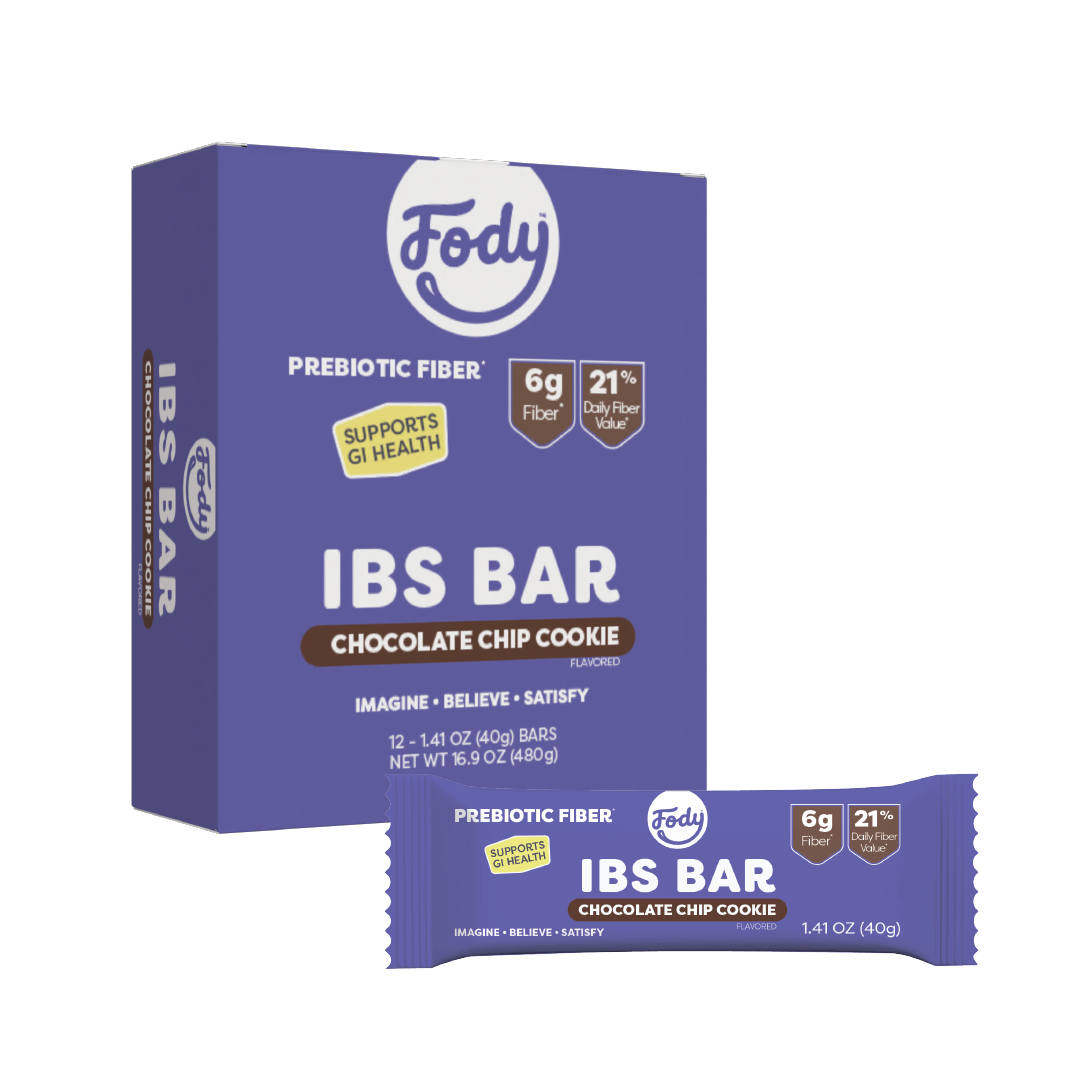
 Chocolate Chip Cookie High Fiber Snack Bar - 12 Pack
Chocolate Chip Cookie High Fiber Snack Bar - 12 PackChocolate Chip Cookie High Fiber Snack Bar - 12 Pack
$32.99
